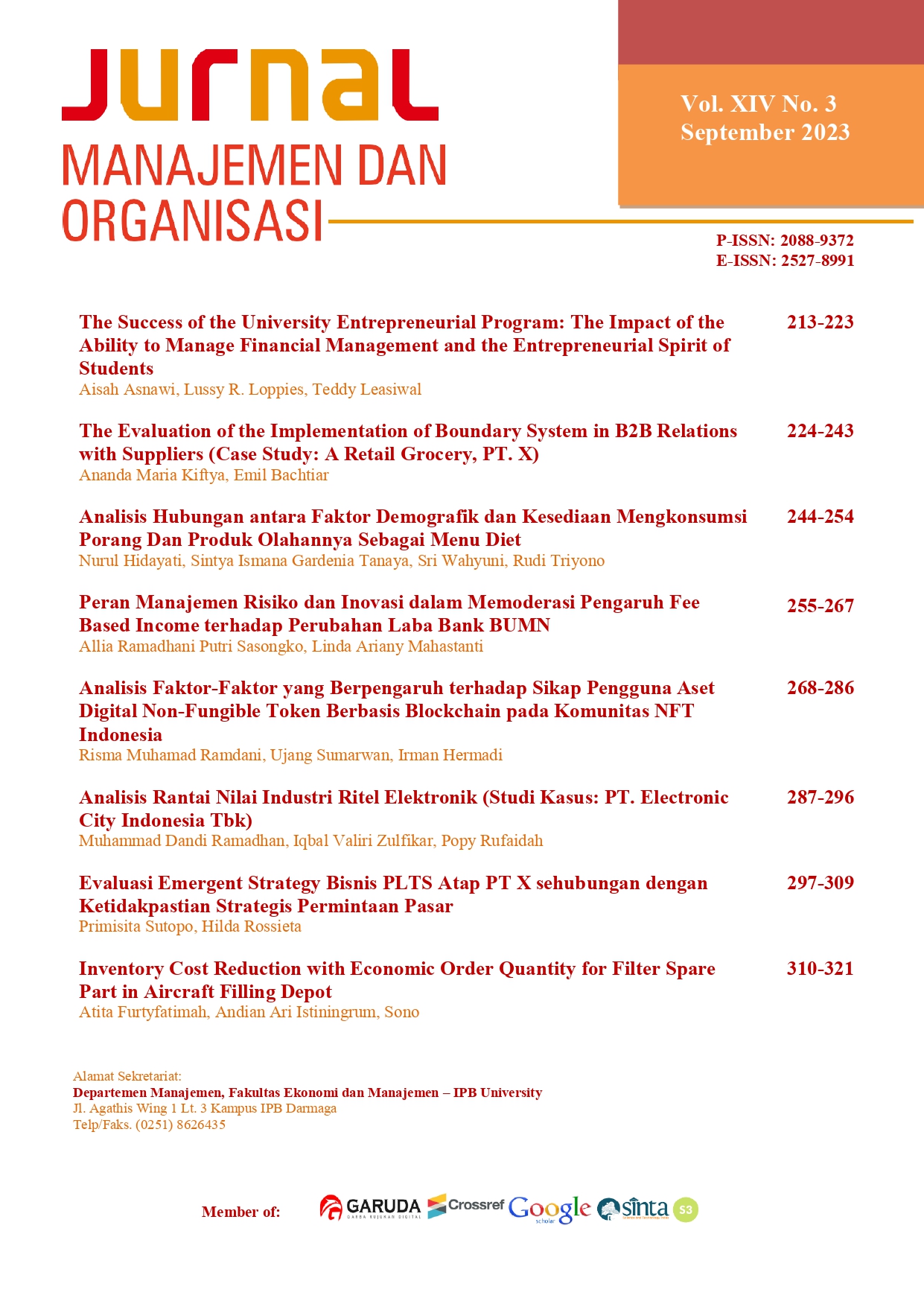Analisis Hubungan antara Faktor Demografik dan Kesediaan Mengkonsumsi Porang Dan Produk Olahannya Sebagai Menu Diet
Abstract
In 2020, the export value of Indonesian porang was increased by 23,35 percent to reach USD19,6 million. The increase was also accompanied by problems such as not being widely known and used by the public, as well as the low level of public knowledge about porang which is beneficial for health. This study aimed to determine public knowledge of porang and analyze the relationship of demographic factors to people's willingness to consume porang and its processed products. The data used in the form of primary data comes from the distribution of online questionnaires and secondary data comes from literature review. This study used a convenience sampling technique involving 436 respondents, as well as descriptive analysis and cross tabulation. The results showed that: (1) respondents' knowledge of porang/processed products as a diet menu had a positive and significant effect on the willingness to make porang/processed products as a diet menu; (2) there was a positive and significant relation between the type of work and the willingness to consume porang/processed products. The appropriate recommendation is to provide education and socialization for the community in order to increase public knowledge and awareness of porang.


.jpg)




